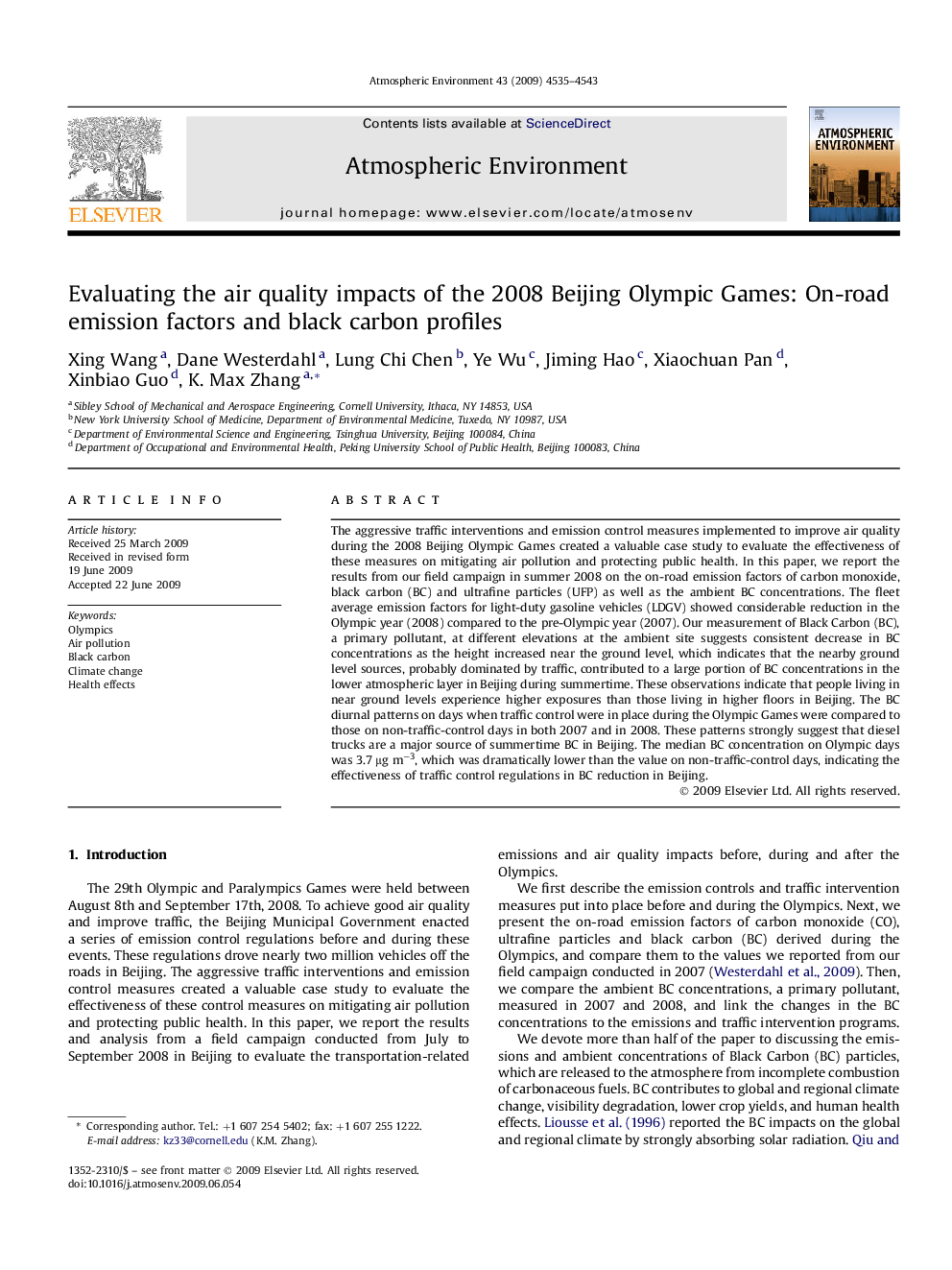| Article ID | Journal | Published Year | Pages | File Type |
|---|---|---|---|---|
| 4440748 | Atmospheric Environment | 2009 | 9 Pages |
The aggressive traffic interventions and emission control measures implemented to improve air quality during the 2008 Beijing Olympic Games created a valuable case study to evaluate the effectiveness of these measures on mitigating air pollution and protecting public health. In this paper, we report the results from our field campaign in summer 2008 on the on-road emission factors of carbon monoxide, black carbon (BC) and ultrafine particles (UFP) as well as the ambient BC concentrations. The fleet average emission factors for light-duty gasoline vehicles (LDGV) showed considerable reduction in the Olympic year (2008) compared to the pre-Olympic year (2007). Our measurement of Black Carbon (BC), a primary pollutant, at different elevations at the ambient site suggests consistent decrease in BC concentrations as the height increased near the ground level, which indicates that the nearby ground level sources, probably dominated by traffic, contributed to a large portion of BC concentrations in the lower atmospheric layer in Beijing during summertime. These observations indicate that people living in near ground levels experience higher exposures than those living in higher floors in Beijing. The BC diurnal patterns on days when traffic control were in place during the Olympic Games were compared to those on non-traffic-control days in both 2007 and in 2008. These patterns strongly suggest that diesel trucks are a major source of summertime BC in Beijing. The median BC concentration on Olympic days was 3.7 μg m−3, which was dramatically lower than the value on non-traffic-control days, indicating the effectiveness of traffic control regulations in BC reduction in Beijing.
